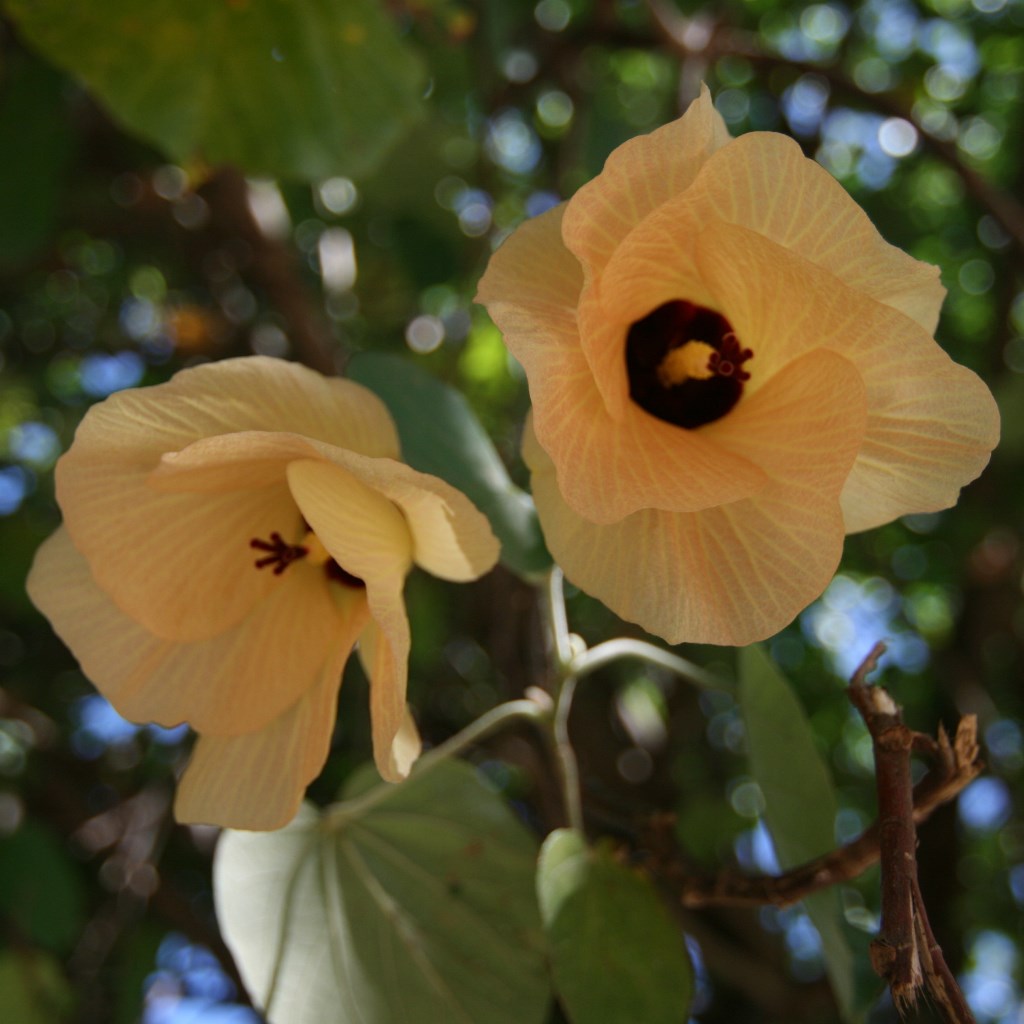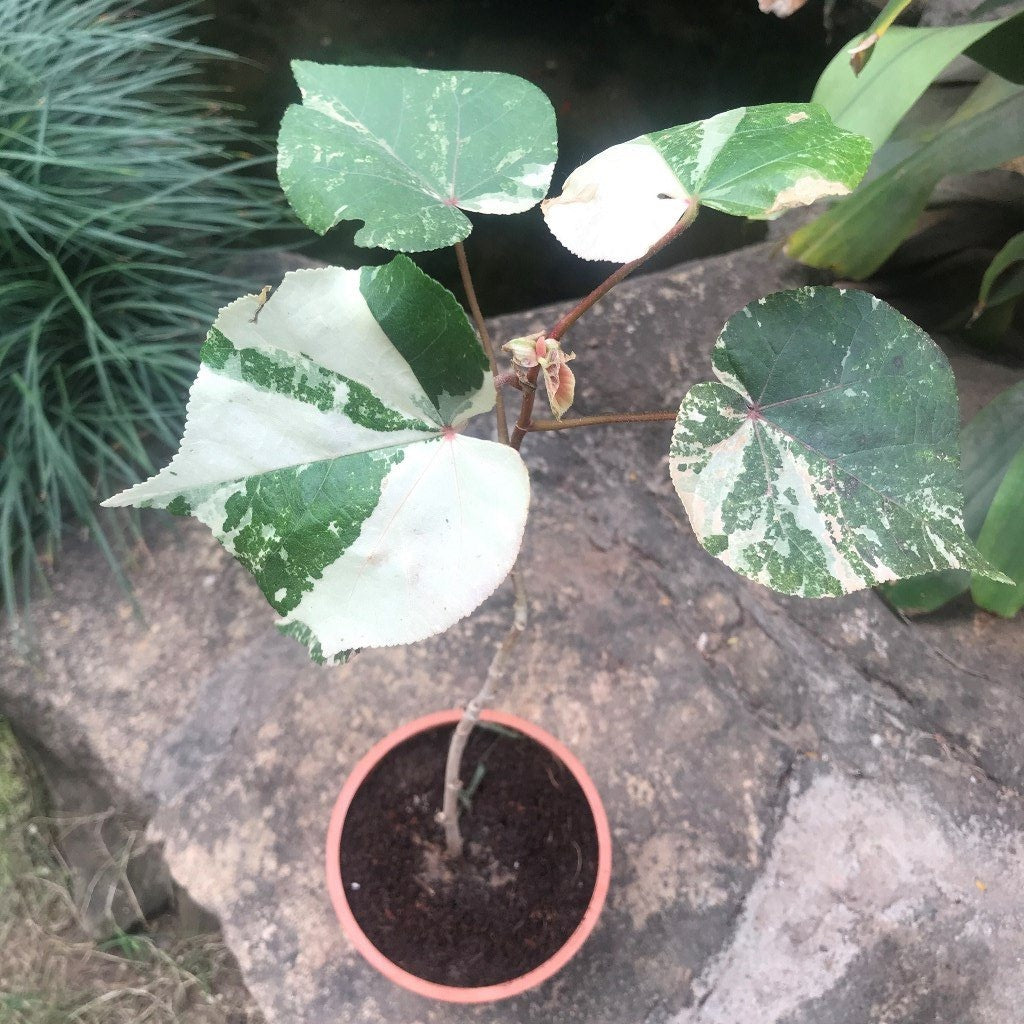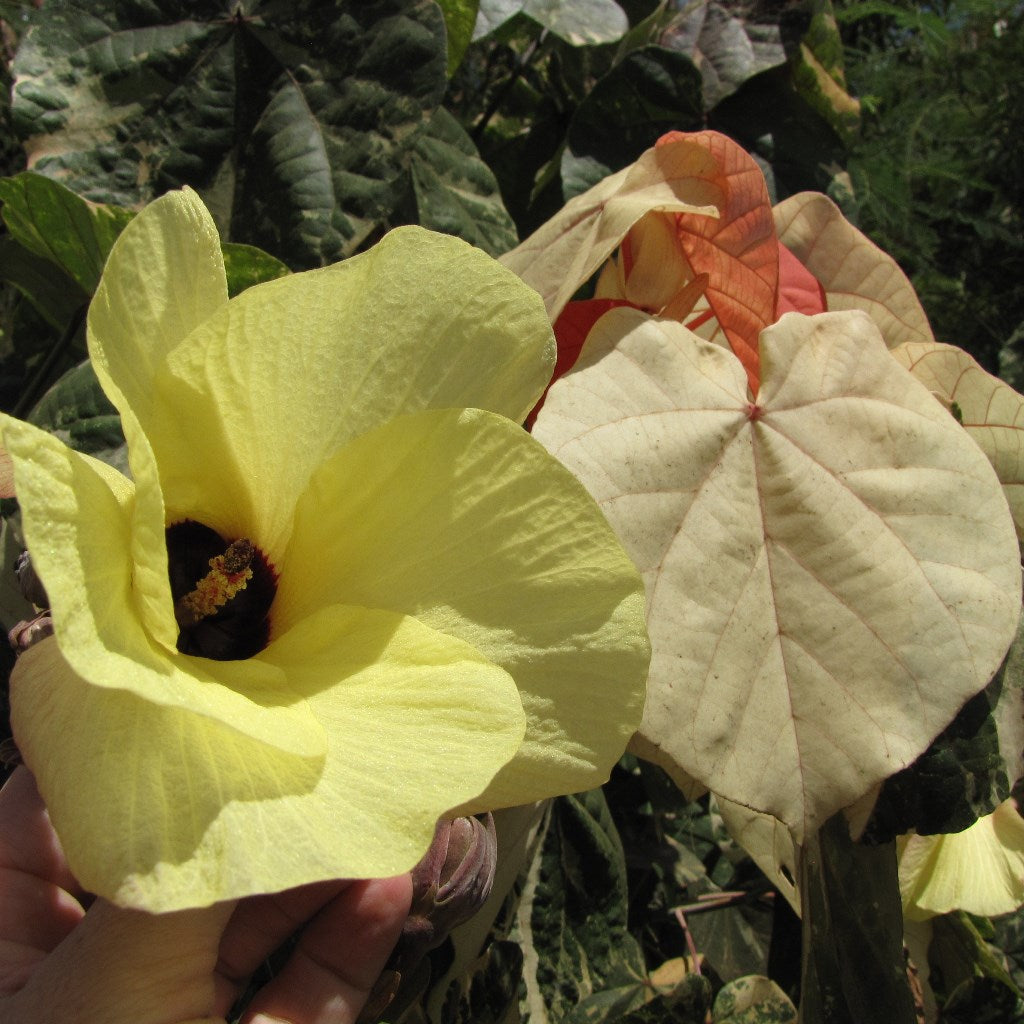Sea Hibiscus
Family
Malvaceae
Origin
India
Description
Beach Hibiscus is a evergreen sprawling tree that typically grows to 10 to 33 ft height with sprawling form. It can be kept small by regular pruning.
It has ovate to orbicular unlobed leaves 7-20 cm long. The leaves are huge - heart shaped, and variegated in shades of green, pink, cream. The variegation varies in many patterns - specks, splashed, and striped. New growth is a rich deep maroon. Huge heart shaped tropical leaves are speckled, splashed, and striped in shades of green, cream, pink, and deep burgundy.
Flowers are clustered near ends of branches, epicalyx forming a 7-12-toothed cup; petals up to 7 cm long, yellowish or white when young with brownish red base, fading to orange-yellow to deep red; as day passes. Flowers are very fragrant.
Environment
Sea Hibiscus Trees require full sun. They will tolerate partial shade; however, growth rate is slower and leaves will be larger.
Hibiscus tiliaceus will thrive in a variety of light to heavy textured soils. The tree can grow in wide range of soil including inhospitable brackish swamps, waterlogged soil & limestone. It stands up well to salty ocean winds.
Water newly planted trees daily to establish the root system in the surrounding soil. These trees are drought tolerant once established; seasonal rains will provide sufficient moisture.
Feed variegated sea hibiscuses a high potassium fertilizer with an N-P-K (nitrogen, phosphorus, potassium) ratio of 10-5-25 or 17-5-24. Apply the fertilizer monthly from spring until late summer. Use it at half-strength to prevent root burn.
Landscape Uses
Hibiscus tiliaceus can be grown as a tree or shrub. It can be used to create shade, or line a driveway or walkway in tropical and subtropical landscapes.
The plant is popular for bonsai in Taiwan and other Asian countries.






















